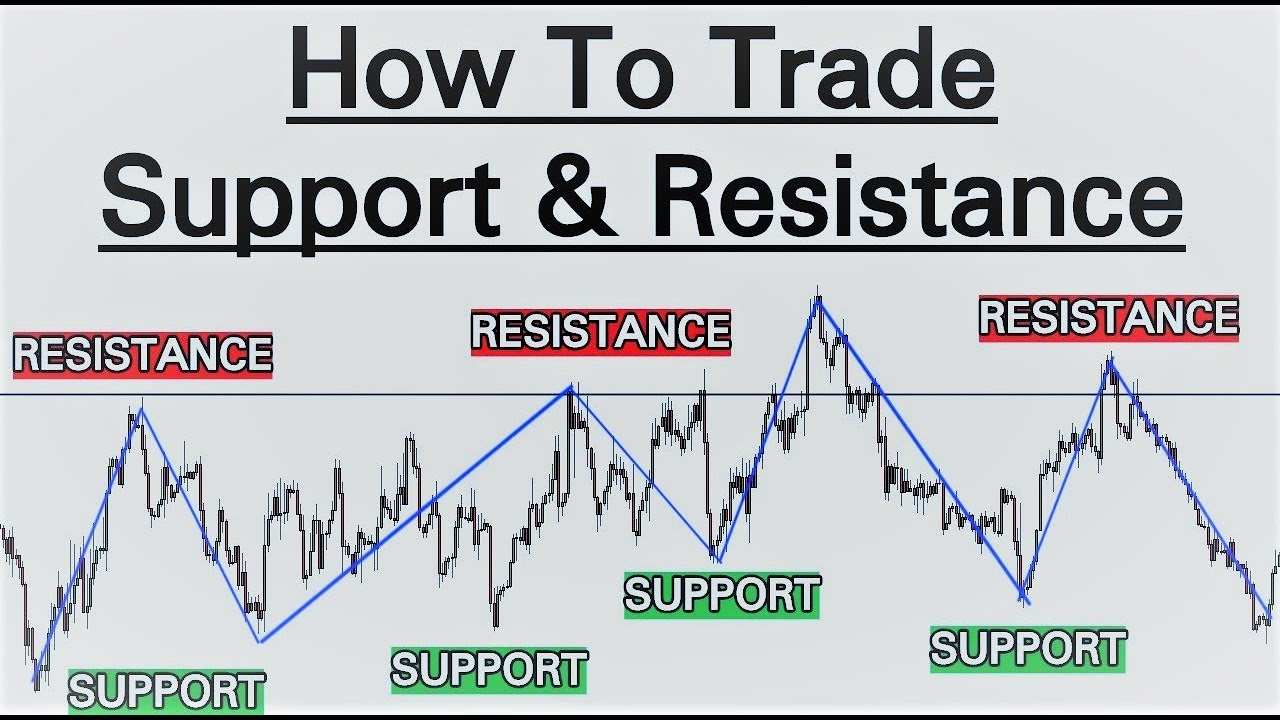How to Trade Forex with Support & Resistance Levels: A Step-by-Step Guide
Support and resistance levels are essential tools in technical analysis that can help you identify potential entry and exit points in Forex trading. These levels represent price points where the market tends to reverse or consolidate, and they form the foundation of many trading strategies.
In this guide, we’ll cover everything you need to know about trading Forex using support and resistance levels, from identifying key levels to executing trades effectively.
What Are Support and Resistance Levels?
- Support: A support level is a price level where a downward trend is expected to pause or reverse. It’s a point where demand is strong enough to prevent the price from falling further.
- Resistance: A resistance level is a price level where an upward trend is expected to pause or reverse. It’s a point where selling pressure is strong enough to prevent the price from rising further.
These levels act like psychological barriers, where traders expect price movements to either bounce off or break through. Recognizing these levels allows traders to anticipate where the market might reverse, thus making informed trading decisions.
How to Identify Support and Resistance Levels
Identifying support and resistance is a critical skill for Forex traders. Here are the main methods for spotting these levels:
1. Swing Highs and Lows
- Swing High: A swing high occurs when the price rises to a peak and then declines. This forms a resistance level.
- Swing Low: A swing low occurs when the price drops to a trough and then rises. This forms a support level.
To identify swing highs and lows, look at the recent price action. The highest peaks will be your resistance levels, and the lowest troughs will be your support levels.
2. Horizontal Lines
- Draw Horizontal Lines: Simply plot horizontal lines at the price points where price has reversed several times. These can indicate both support and resistance.
For example, if price has touched the 1.2000 level multiple times but failed to break above it, 1.2000 will act as a strong resistance level. Similarly, if price keeps bouncing off 1.1500, that’s your support level.
3. Trendlines
- Trendlines: You can draw trendlines to connect higher lows in an uptrend (support) or lower highs in a downtrend (resistance). These dynamic levels shift as price moves.
4. Round Numbers
- Round numbers like 1.0000, 1.5000, 1.2000, etc., often act as psychological support or resistance levels. Traders may place buy or sell orders near these numbers, creating significant price reactions.
How to Trade Using Support and Resistance Levels
Once you’ve identified key support and resistance levels, here’s how to incorporate them into your trading strategy:
1. Trading the Bounce (Reversal)
This strategy involves trading when the price approaches a support or resistance level and shows signs of reversing.
- Buy at Support: If the price approaches a support level and shows signs of bouncing (e.g., candlestick reversal patterns like pin bars or engulfing patterns), consider buying.
- Sell at Resistance: If the price approaches a resistance level and shows signs of rejecting (e.g., candlestick patterns like shooting stars or bearish engulfing), consider selling.
Example:
- The price of EUR/USD falls towards the 1.1500 support level. You notice a bullish pin bar forming, signaling a potential reversal. You decide to enter a buy trade at 1.1505, placing a stop loss below the support level at 1.1480. Your target is the next resistance level around 1.1600.
2. Trading the Breakout
A breakout occurs when the price moves past a support or resistance level, signaling a potential continuation of the trend.
- Buy on a Breakout: If the price breaks above a resistance level, this could indicate that the uptrend is continuing. Consider entering a buy trade once the price closes above resistance.
- Sell on a Breakdown: If the price breaks below a support level, this could signal that the downtrend is continuing. Consider entering a sell trade once the price closes below support.
Example:
- EUR/USD is trading in a range, with resistance at 1.2000 and support at 1.1800. The price breaks above 1.2000, and you enter a buy order at 1.2020 with a stop loss just below 1.2000. Your target is the next resistance level at 1.2200.
3. Using Support and Resistance with Other Indicators
To increase the reliability of your trades, combine support and resistance levels with other technical indicators. Some common indicators include:
- RSI (Relative Strength Index): RSI can help you identify overbought or oversold conditions near key support and resistance levels.
- Moving Averages: Moving averages can act as dynamic support or resistance. A common strategy is to buy when the price bounces off a moving average at support, or sell when it rejects the moving average at resistance.
- MACD (Moving Average Convergence Divergence): Use MACD to confirm trend direction and momentum, especially after a breakout or reversal at support/resistance levels.
Risk Management with Support and Resistance
Risk management is key to successful trading, especially when trading near support and resistance levels.
1. Set Stop Loss Orders
- Always place a stop loss order to protect your capital. If you’re trading at support, place the stop loss just below the support level. If you’re trading at resistance, place it just above the resistance level.
2. Position Sizing
- Ensure your position size matches the amount of risk you are willing to take. For example, if you’re willing to risk 1% of your capital on a trade, adjust your position size so that a loss would not exceed that amount.
3. Take Profit Orders
- Place take-profit orders at the next major support or resistance level. For example, if you’re buying at support, target the next resistance level. If you’re selling at resistance, target the next support level.
Common Mistakes to Avoid
- Ignoring the Trend: Don’t trade against the trend. It’s safer to buy at support during an uptrend and sell at resistance during a downtrend.
- Overtrading: Avoid trading too frequently just because a support or resistance level appears. Wait for confirmation before entering a trade.
- Not Adjusting for Market Conditions: Market conditions can change. If the market is very volatile or in consolidation, be extra cautious with support and resistance levels.
Final Thoughts
Support and resistance levels are foundational in technical analysis for Forex trading. They provide clear price levels where the market is likely to reverse or break out, and they can be used in a variety of strategies. By learning to identify and trade these levels with proper risk management, you can significantly improve your trading success.




